Difference between revisions of "Pig leather"
(Created page with "<p align=center> 300px </p> ==Schweinsleder== Auf der Welt gibt es ca. 950 Mio. Schweine (Stand 2005). Davon werden jährlich fast 100% gesch...") |
|||
| (26 intermediate revisions by one user not shown) | |||
| Line 4: | Line 4: | ||
| − | == | + | <p align=center> |
| − | + | [[bild:Schwein-Hausschwein-01.jpg|500px]] | |
| + | </p> | ||
| + | |||
| + | |||
| + | ==Pig leather - Pigskin - Pig suede - Pork- Pork suede== | ||
| + | |||
| + | The use of pig [[leather]] dates back to the early days of humanity. Thousands of years ago, our ancestors recognized the [[leather quality|durability and flexibility]] of this material. In many cultures, pigs were raised and slaughtered not only for their meat but also for their valuable hides. Leather made from pig skin was used for [[Leather clothing|clothing]], [[leather shoes|shoes]], containers, and other everyday items. | ||
| + | |||
| + | During the Middle Ages and the Renaissance, pig leather became widely popular in Europe. It became an important resource for the growing population, as it was used in the production of clothing, shoes, and [[leather gloves|gloves]]. Leather [[Tannery|tanneries]] in Germany, France, and Italy, in particular, developed into significant [[leather industry|centers for processing]] pig leather. | ||
| + | |||
| + | The mass production of pig leather began with the industrial revolution in the 18th and 19th centuries. The demand increased as the leather was utilized in the manufacturing of clothing, shoes, [[Leather accessories|accessories]], and other everyday items. Due to its flexibility, [[Haptic evaluation of leather surfaces|softness]], and durability, pig leather proved to be ideal for these applications. It was also used in the production of gloves and [[Leather wallets|wallets]]. | ||
| + | |||
| + | Globally, there are about 740 million pigs and almost 100% are slaughtered annually. Pigs are slaughtered at the age of 6 to 10 months. Pig suede is ranked fourth, with about 5 to 7% of world production. Pig leather is ranked fourth in the world's total leather production, after [[cow leather|cow]], [[Sheep leather|sheep]] and [[goatskin|goat]] leather. | ||
<p align=center> | <p align=center> | ||
| − | [[bild:Schweinefleisch-Chinesisch-.jpg| | + | [[bild:Schweinefleisch-Chinesisch-.jpg|500px]] |
| − | + | ||
</p> | </p> | ||
<p align=center> | <p align=center> | ||
| − | '' | + | [[bild:Schweinefleisch-Grieche.jpg|500px]] |
| + | </p> | ||
| + | <p align=center> | ||
| + | ''Chinese pork dish. - Greek-style pork.''<br></p> | ||
<p> </p> | <p> </p> | ||
| − | + | The leather of domestic pigs, commonly called pork, is distinguished from the wild boar. Peccary leather is the most representative for the [[leather industry]]. The European domestic pig, especially, provides a leather which is very rich in fat. Domestic pigs are only slightly hairy. The grouped holes of the [[Leather hair pores - Hair follicles|hair pores]] are a characteristic of pig leather. Usually the hair follicles are grouped in packs of 3. The fibre structure within the pigskin is very different. The leather is [[Looseness|loose and spongy]] on the head, while on the flank it is sometimes horny. | |
<p align=center> | <p align=center> | ||
| − | [[bild: | + | [[bild:Schweinsleder-01.jpg|500px]] |
</p> | </p> | ||
<p align=center> | <p align=center> | ||
| − | '' | + | [[bild:Schweinsleder-Velour-01.jpg|500px]] |
| + | </p> | ||
| + | <p align=center> | ||
| + | '' Pig [[suede]]. - Well recognizable: the [[Leather hair pores - Hair follicles|hair pores]].''<br></p> | ||
<p> </p> | <p> </p> | ||
<p align=center> | <p align=center> | ||
| − | [[bild: | + | [[bild:Schwein-Wildschwein-01.jpg|500px]] |
| − | + | ||
</p> | </p> | ||
<p align=center> | <p align=center> | ||
| − | + | [[bild:Schwein-Wildschwein-02.jpg|500px]] | |
| + | </p> | ||
| + | <p align=center> | ||
| + | ''Wild boar skin.''<br></p> | ||
<p> </p> | <p> </p> | ||
| + | |||
| + | ==Peccary== | ||
| + | Peccary is the name for pig leather from the hides of wild South American nelfer pigs. The term "peccary" originates from the indigenous Brazilian Tupi language and roughly describes "an animal that treads many paths in the forest". Due to the free life in nature, the leather often has [[Natural markings on leather|scars and other defects]], which should be regarded as an authenticity feature. Peccary is used for valuable [[leather gloves|gloves]] due to its suppleness. It is also a popular source of food because of its aromatic meat. | ||
| + | |||
<p align=center> | <p align=center> | ||
| − | [[bild: | + | [[bild:peccary.jpg|500px]] |
| − | + | ||
</p> | </p> | ||
<p align=center> | <p align=center> | ||
| − | '' | + | ''Peccary pig.''<br></p> |
<p> </p> | <p> </p> | ||
| − | == | + | <p align=center> |
| − | + | [[bild:peccary3.jpg|500px]] | |
| + | </p> | ||
| + | <p align=center> | ||
| + | [[bild:peccary2.jpg|500px]] | ||
| + | </p> | ||
| + | <p align=center> | ||
| + | [[bild:Peccary-pig-leather-leather gloves-01.jpg|500px]] | ||
| + | </p> | ||
| + | <p align=center> | ||
| + | [[bild:Peccary-pig-leather-leather gloves-02.jpg|500px]] | ||
| + | </p> | ||
| + | <p align=center> | ||
| + | ''Soft [[leather gloves|glove leather]] of the peccary with visible [[Leather hair pores - Hair follicles|hair pores]].''<br></p> | ||
| + | <p> </p> | ||
| + | |||
| + | <p align=center> | ||
| + | [[bild:Hanschuhe-Peccary-01.jpg|500px]] | ||
| + | </p> | ||
| + | <p align=center> | ||
| + | [[bild:Hanschuhe-Peccary-02.jpg|500px]] | ||
| + | </p> | ||
| + | <p align=center> | ||
| + | ''Peccary pig [[leather gloves]] (available at [http://www.heinzbauer.com/index.php?clang=&nr= www.heinzbauer.com]).''<br></p> | ||
| + | <p> </p> | ||
| + | |||
| + | Peccary should not be confused with the similar [[carpincho leather]], which is of a South American large rodent type. | ||
| + | |||
| + | |||
| + | ==Pig [[leather clothing]]== | ||
| + | Pig leather is most commonly used in [[leather clothing|clothing]]. In addition to [[Lamb leather|lambskin]] and [[goatskin|goat suede]], it is the most common type of leather in [[leather clothing]]. All three [[types of leather|leather types]] are light and not too warm and therefore ideal for leisure wear. [[cow leather|Cow leather]] is mainly used for [[Leather suits|motorcycle suits]]. It is significantly [[leather quality|thicker and tear proof]] and, for safety reasons, the first choice. The leather of the peccary is used predominantly for high-quality [[leather gloves|gloves]]. | ||
| − | + | Pig leather is also processed heavily in the cheaper segment of the [[leather clothing]] market, mostly as [[suede]], but occasionally also as [[finish|pigmented]] [[smooth leather]]. Pig leather is cheaper than [[lamb leather]]. Pig leather is less [[Tensile strength - Tear strength|tear-resistant]] compared to high-quality [[lamb leather|lamb]] and [[goatskin|goat leather]]. Pig leather also has a more cardboard-like [[Haptic evaluation of leather surfaces|haptic]]. | |
| Line 55: | Line 106: | ||
<p align=center> | <p align=center> | ||
| − | [[bild:Schweinsleder-Jacke-01.jpg| | + | [[bild:Schweinsleder-Jacke-01.jpg|500px]] |
| − | + | ||
</p> | </p> | ||
<p align=center> | <p align=center> | ||
| − | '' | + | [[bild:Schweinsleder-Jacke-02.jpg|500px]] |
| + | </p> | ||
| + | <p align=center> | ||
| + | ''Pig leather is often sold at low prices.''<br></p> | ||
<p> </p> | <p> </p> | ||
<p align=center> | <p align=center> | ||
| − | [[bild:Jacke-Schwein-pigmentiert-0.jpg| | + | [[bild:Jacke-Schwein-pigmentiert-0.jpg|500px]] |
| − | [[bild:Jacke-Schwein-pigmentiert-n.jpg| | + | </p> |
| + | <p align=center> | ||
| + | [[bild:Jacke-Schwein-pigmentiert-n.jpg|500px]] | ||
</p> | </p> | ||
<p align=center> | <p align=center> | ||
| − | ''[[ | + | ''[[Finish|Finished (pigmented)]] pig leather can still be recognised by the [[Leather hair pores - Hair follicles|prominent pores]].''<br></p> |
<p> </p> | <p> </p> | ||
| − | ==[[ | + | ==[[Leather book cover|Book covers]] and [[leather handbags|handbags inner lining]]== |
| − | + | In addition to [[leather clothing|clothing leather]], pig leather is also used as an inner lining for [[leather handbags|handbags]] or for [[Leather book cover|book bindings]]. | |
<p align=center> | <p align=center> | ||
| − | [[bild:Schweinslederbindung-01.jpg| | + | [[bild:Schweinslederbindung-01.jpg|500px]] |
| − | + | ||
</p> | </p> | ||
<p align=center> | <p align=center> | ||
| − | ''[[ | + | [[bild:Handtasche-innen-02.jpg|500px]] |
| + | </p> | ||
| + | <p align=center> | ||
| + | ''[[Leather book cover|Book cover]] made of pig leather from the collection of [http://www.feinleder-hoffmann.com www.feinleder-hoffmann.com]. - Pig leather as inner lining of a [[leather handbags|handbag]].''<br></p> | ||
<p> </p> | <p> </p> | ||
| − | == | + | ==[[Leather luggage|Leather suitcase]] made of pig leather== |
| − | + | The history of pigskin [[Leather luggage|suitcases]] dates back a long way and is closely linked to the development of travel. Pigskin leather was considered an ideal material for making suitcases due to its [[leather quality|durability]], flexibility, and [[Waterproofing leather|water resistance]]. In the 19th century, pigskin suitcases became widely popular. They were sturdy enough to withstand the demands of travel by horse and carriage, as well as the emerging railway system. Over time, pigskin suitcases gained even more popularity and found their place in the travel culture of the 20th century. Nowadays, while they may have lost some of their popularity, they remain a symbol of traditional craftsmanship and reliability in the world of travel. | |
<p align=center> | <p align=center> | ||
| − | [[bild: | + | [[bild:Lederoel_01_0601.jpg|500px]] |
</p> | </p> | ||
| + | <p align=center> | ||
| + | [[bild:Koffer-Schweinsleder-01.jpg|500px]] | ||
| + | </p> | ||
| + | <p align=center> | ||
| + | ''Typical [[Leather luggage|leather suitcase]] from South America made of pig leather.''<br></p> | ||
| + | <p> </p> | ||
| + | |||
| + | ==Rarities from pigskin== | ||
| + | Due to the lower [[leather quality|stability]] of pigskin, the fields of application are limited. But there are historical exceptions. | ||
<p align=center> | <p align=center> | ||
| − | [[bild: | + | [[bild:Möbel-Schweinsleder-02.jpg|500px]] |
| − | + | ||
</p> | </p> | ||
| + | <p align=center> | ||
| + | [[bild:Möbel-Schweinsleder-01.jpg|500px]] | ||
| + | </p> | ||
| + | <p align=center> | ||
| + | ''Pig leather is not suitable as an [[leather furniture|upholstery]] leather.''<br></p> | ||
| + | <p> </p> | ||
<p align=center> | <p align=center> | ||
| − | [[bild: | + | [[bild:Sattel-Schweinsleder-01.jpg|500px]] |
| − | + | ||
</p> | </p> | ||
<p align=center> | <p align=center> | ||
| − | '' | + | ''Very curious I: An old [[leather saddle#Bicycle saddle|bicycle saddle]] made of pig leather.''<br></p> |
<p> </p> | <p> </p> | ||
| − | + | <p align=center> | |
| − | + | [[bild:Pigskin-seat-scooter.jpg|500px]] | |
| − | + | </p> | |
| − | = | + | <p align=center> |
| − | + | ''Very curious II: Scooter [[Leather saddle#Motorcycle saddles|seat]] covered with pigskin made from leftover clothing.''<br></p> | |
| − | + | <p> </p> | |
<p align=center> | <p align=center> | ||
| − | [[bild: | + | [[bild:Sable sheath pigskin 02.jpg|500px]] |
| − | + | ||
</p> | </p> | ||
<p align=center> | <p align=center> | ||
| − | '' | + | [[bild:Sable sheath pigskin 01.jpg|500px]] |
| + | </p> | ||
| + | <p align=center> | ||
| + | ''Approximately 200 years old [[weapon leather|saber sheath]] made of pig leather for the planters of the Dutch East India Company (photo [https://www.mw-blankwaffen.de/ www.mw-blankwaffen.de]).''<br></p> | ||
<p> </p> | <p> </p> | ||
| − | + | ==Pigskin embossing== | |
| − | ==[[ | + | Even though pigskin may not have the same good reputation, it is also embossed onto other types of leather. Some people appreciate the rustic charm and unique appearance of pigskin. By embossing a pigskin grain pattern onto leather from other [[Exotic leather|animal species]], a similar look can be achieved without sacrificing the [[leather quality|benefits and characteristics]] of leather from other animal species. |
| − | + | ||
<p align=center> | <p align=center> | ||
| − | [[bild: | + | [[bild:Pigskin-embossing.jpg|500px]] |
| − | + | ||
</p> | </p> | ||
<p align=center> | <p align=center> | ||
| − | '' | + | ''Leather handbag with pigskin embossing.''<br></p> |
<p> </p> | <p> </p> | ||
| − | |||
| − | |||
| − | |||
| − | |||
| − | |||
<p align=center> | <p align=center> | ||
| − | [[bild: | + | [[bild:Mercedes-pigskin-embossing 01.jpg|500px]] |
</p> | </p> | ||
<p align=center> | <p align=center> | ||
| − | '' | + | [[bild:Mercedes-Schweinslederpraegung-03.jpg|500px]] |
| + | </p> | ||
| + | <p align=center> | ||
| + | ''Pigskin embossing on [[Vintage & Classic car leather|Mercedes vintage]] leather.''<br></p> | ||
<p> </p> | <p> </p> | ||
| − | < | + | <p align=center> |
| − | + | [[bild:BMW-Autoleder-Cinghalin2.jpg|500px]] | |
| + | </p> | ||
| + | <p align=center> | ||
| + | ''[[car leather#BMW|BMW]] leather embossing on modern car leather: Cinghalino - cowhide with pigskin grain.''<br></p> | ||
| + | <p> </p> | ||
| − | ==[[ | + | == [[Leather videos|Video]] about [[Exotic leather|leather of different animal species]]== |
| + | <br> | ||
<p align=center> | <p align=center> | ||
| − | <flashow> | + | <flashow>//www.youtube.com/v/-tJtZmJCWLw&fs=1&color1=0x660000&color2=0x550000&border=1|width=500|height=281,25</flashow> |
</p> | </p> | ||
<p align=center> | <p align=center> | ||
| − | ''[[ | + | ''[[Exotic leather|Leather of different animal species - Exotic leather]].'' |
</p> | </p> | ||
== Additional information == | == Additional information == | ||
| − | * [[ | + | * [[Types of leather]] |
| − | * [[ | + | * [[Leather clothing]] |
| − | * [[ | + | * [[Exotic leather]] |
Latest revision as of 18:20, 26 May 2023
Contents
Pig leather - Pigskin - Pig suede - Pork- Pork suede
The use of pig leather dates back to the early days of humanity. Thousands of years ago, our ancestors recognized the durability and flexibility of this material. In many cultures, pigs were raised and slaughtered not only for their meat but also for their valuable hides. Leather made from pig skin was used for clothing, shoes, containers, and other everyday items.
During the Middle Ages and the Renaissance, pig leather became widely popular in Europe. It became an important resource for the growing population, as it was used in the production of clothing, shoes, and gloves. Leather tanneries in Germany, France, and Italy, in particular, developed into significant centers for processing pig leather.
The mass production of pig leather began with the industrial revolution in the 18th and 19th centuries. The demand increased as the leather was utilized in the manufacturing of clothing, shoes, accessories, and other everyday items. Due to its flexibility, softness, and durability, pig leather proved to be ideal for these applications. It was also used in the production of gloves and wallets.
Globally, there are about 740 million pigs and almost 100% are slaughtered annually. Pigs are slaughtered at the age of 6 to 10 months. Pig suede is ranked fourth, with about 5 to 7% of world production. Pig leather is ranked fourth in the world's total leather production, after cow, sheep and goat leather.
Chinese pork dish. - Greek-style pork.
The leather of domestic pigs, commonly called pork, is distinguished from the wild boar. Peccary leather is the most representative for the leather industry. The European domestic pig, especially, provides a leather which is very rich in fat. Domestic pigs are only slightly hairy. The grouped holes of the hair pores are a characteristic of pig leather. Usually the hair follicles are grouped in packs of 3. The fibre structure within the pigskin is very different. The leather is loose and spongy on the head, while on the flank it is sometimes horny.
Pig suede. - Well recognizable: the hair pores.
Wild boar skin.
Peccary
Peccary is the name for pig leather from the hides of wild South American nelfer pigs. The term "peccary" originates from the indigenous Brazilian Tupi language and roughly describes "an animal that treads many paths in the forest". Due to the free life in nature, the leather often has scars and other defects, which should be regarded as an authenticity feature. Peccary is used for valuable gloves due to its suppleness. It is also a popular source of food because of its aromatic meat.
Peccary pig.
Soft glove leather of the peccary with visible hair pores.
Peccary pig leather gloves (available at www.heinzbauer.com).
Peccary should not be confused with the similar carpincho leather, which is of a South American large rodent type.
Pig leather clothing
Pig leather is most commonly used in clothing. In addition to lambskin and goat suede, it is the most common type of leather in leather clothing. All three leather types are light and not too warm and therefore ideal for leisure wear. Cow leather is mainly used for motorcycle suits. It is significantly thicker and tear proof and, for safety reasons, the first choice. The leather of the peccary is used predominantly for high-quality gloves.
Pig leather is also processed heavily in the cheaper segment of the leather clothing market, mostly as suede, but occasionally also as pigmented smooth leather. Pig leather is cheaper than lamb leather. Pig leather is less tear-resistant compared to high-quality lamb and goat leather. Pig leather also has a more cardboard-like haptic.
Pig leather is often sold at low prices.
Finished (pigmented) pig leather can still be recognised by the prominent pores.
Book covers and handbags inner lining
In addition to clothing leather, pig leather is also used as an inner lining for handbags or for book bindings.
Book cover made of pig leather from the collection of www.feinleder-hoffmann.com. - Pig leather as inner lining of a handbag.
Leather suitcase made of pig leather
The history of pigskin suitcases dates back a long way and is closely linked to the development of travel. Pigskin leather was considered an ideal material for making suitcases due to its durability, flexibility, and water resistance. In the 19th century, pigskin suitcases became widely popular. They were sturdy enough to withstand the demands of travel by horse and carriage, as well as the emerging railway system. Over time, pigskin suitcases gained even more popularity and found their place in the travel culture of the 20th century. Nowadays, while they may have lost some of their popularity, they remain a symbol of traditional craftsmanship and reliability in the world of travel.
Typical leather suitcase from South America made of pig leather.
Rarities from pigskin
Due to the lower stability of pigskin, the fields of application are limited. But there are historical exceptions.
Pig leather is not suitable as an upholstery leather.
Very curious I: An old bicycle saddle made of pig leather.
Very curious II: Scooter seat covered with pigskin made from leftover clothing.
Approximately 200 years old saber sheath made of pig leather for the planters of the Dutch East India Company (photo www.mw-blankwaffen.de).
Pigskin embossing
Even though pigskin may not have the same good reputation, it is also embossed onto other types of leather. Some people appreciate the rustic charm and unique appearance of pigskin. By embossing a pigskin grain pattern onto leather from other animal species, a similar look can be achieved without sacrificing the benefits and characteristics of leather from other animal species.
Leather handbag with pigskin embossing.
Pigskin embossing on Mercedes vintage leather.
BMW leather embossing on modern car leather: Cinghalino - cowhide with pigskin grain.
Video about leather of different animal species
Leather of different animal species - Exotic leather.
Additional information







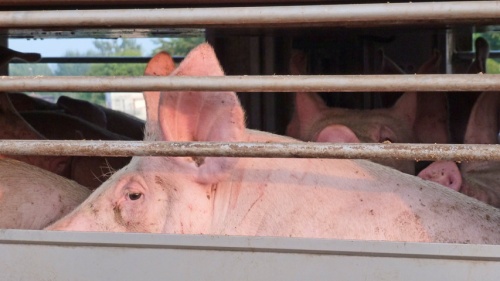
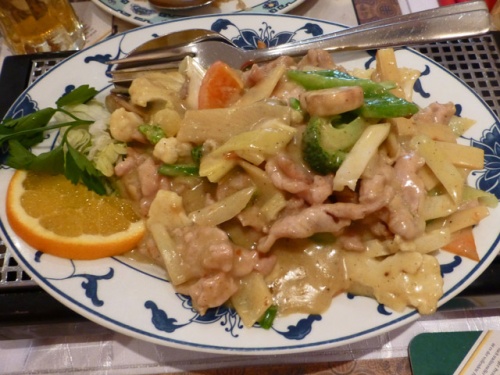
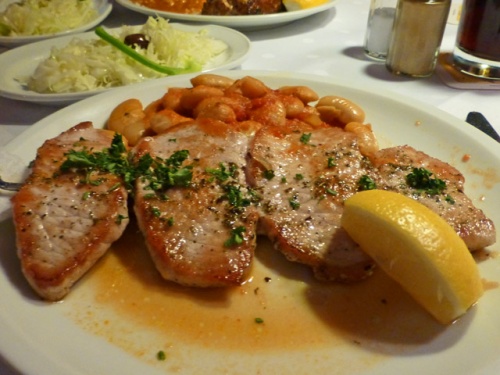
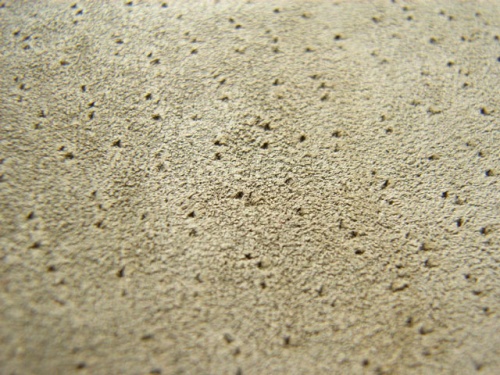
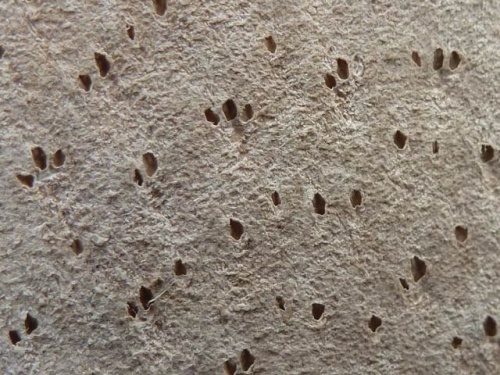
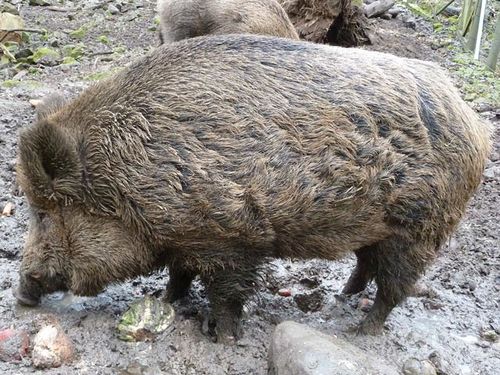
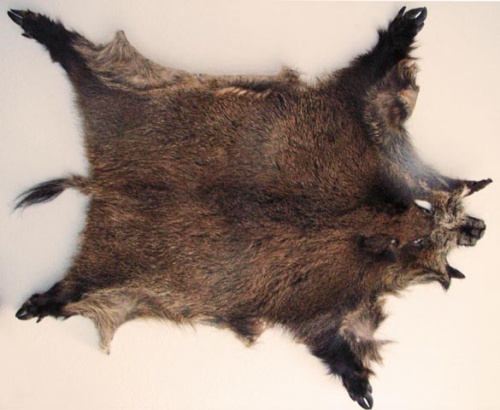
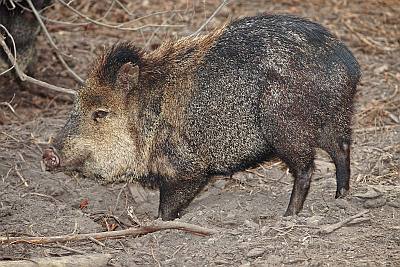
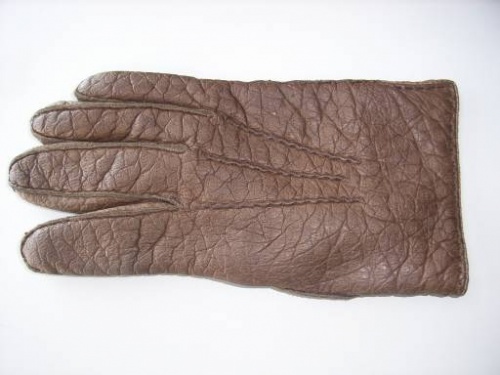
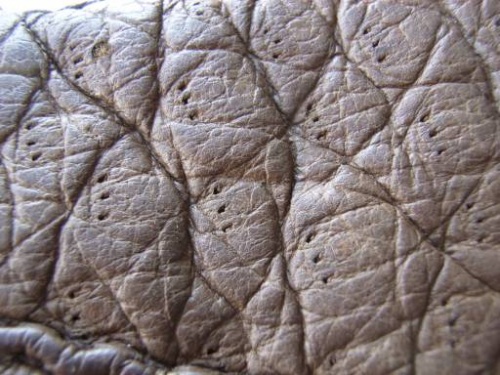
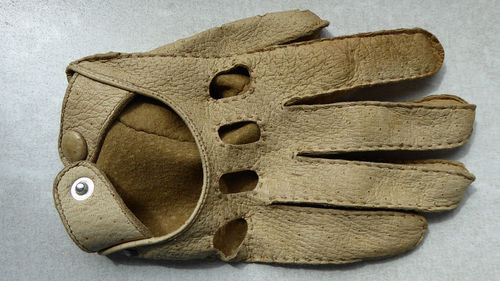
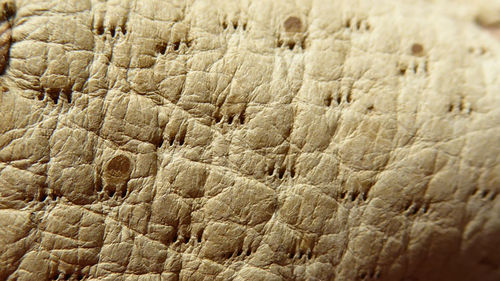
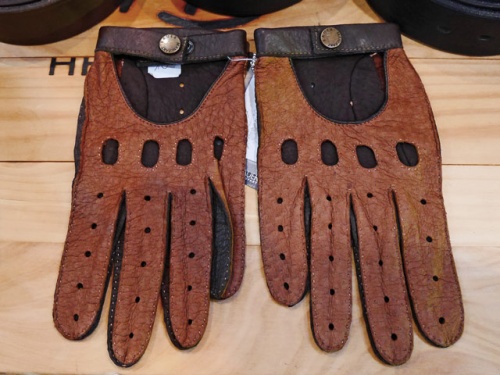
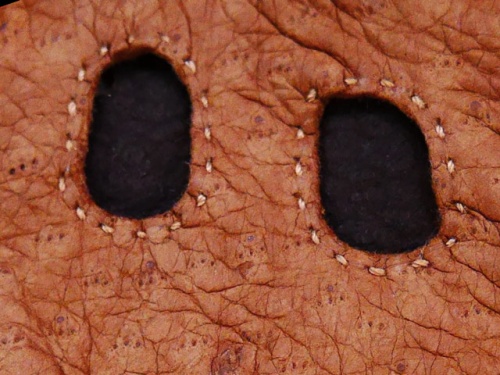

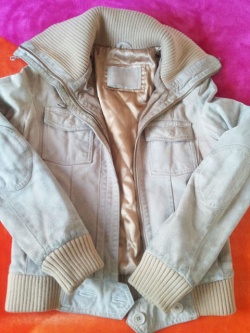
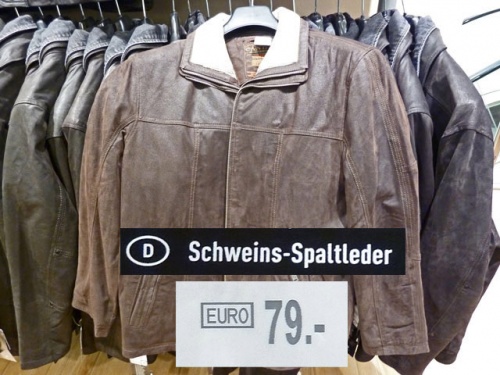
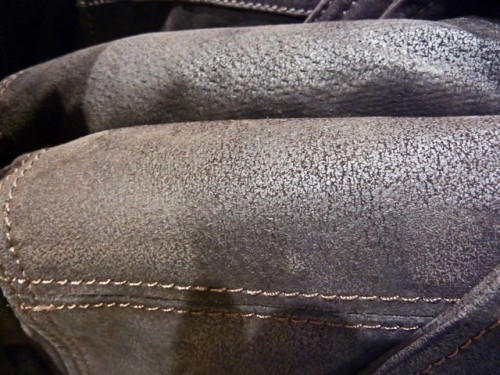
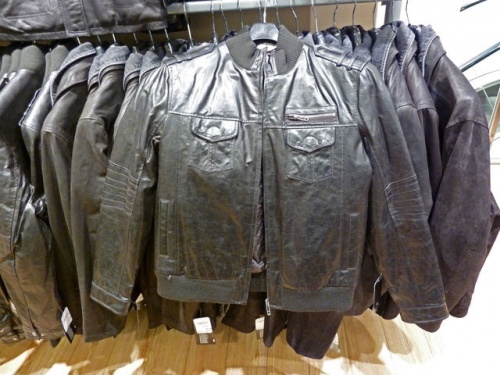
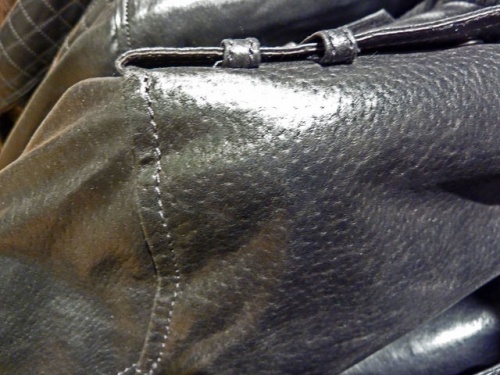
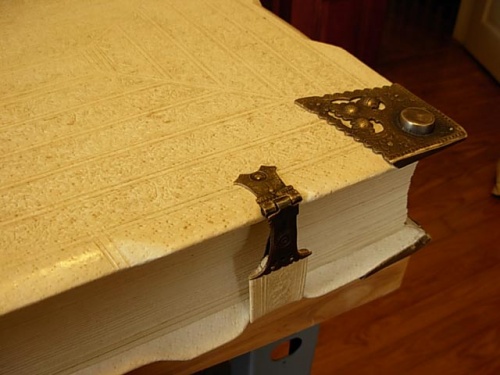
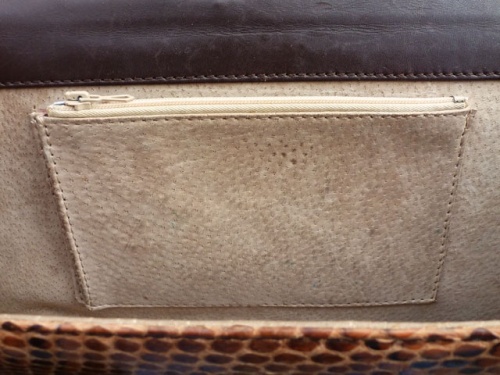
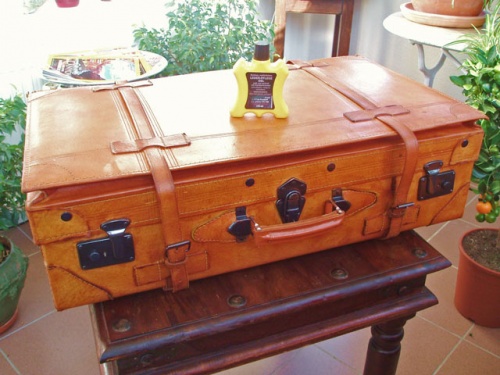
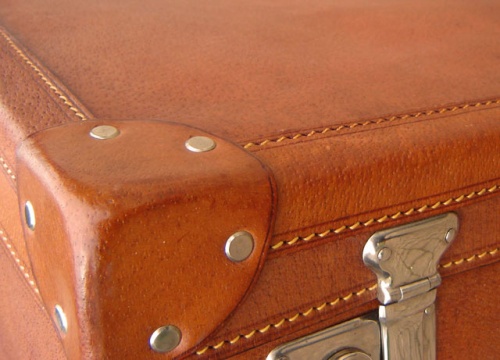
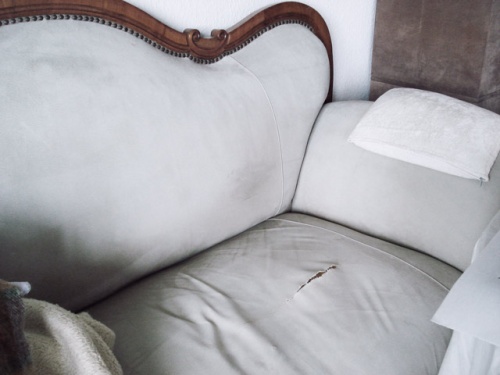
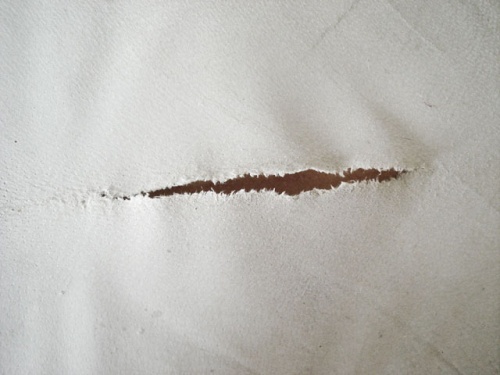
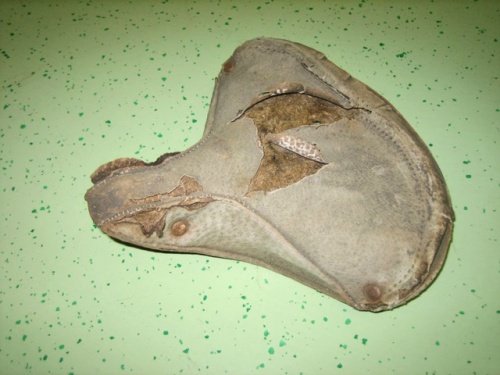
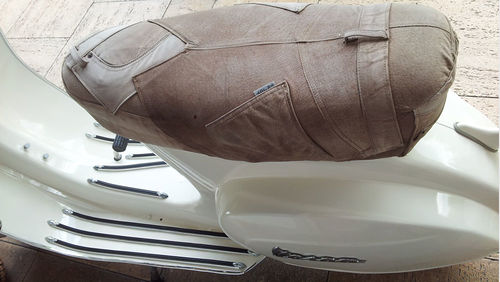
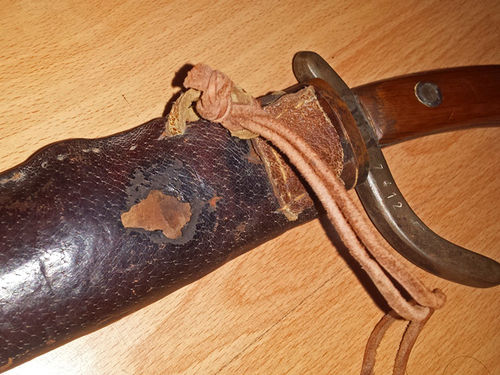
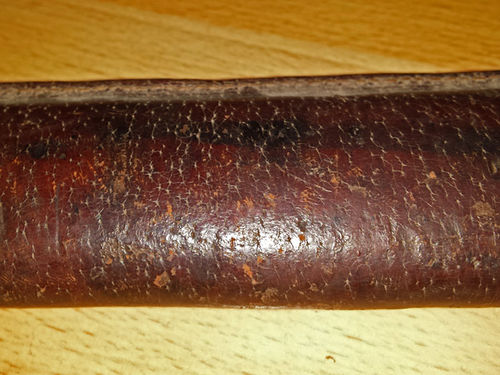
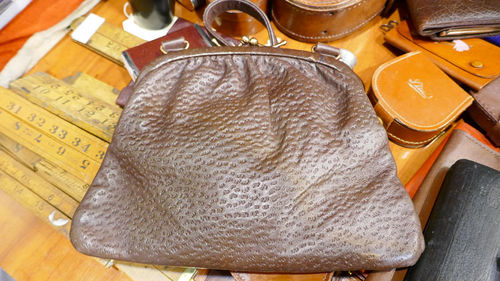
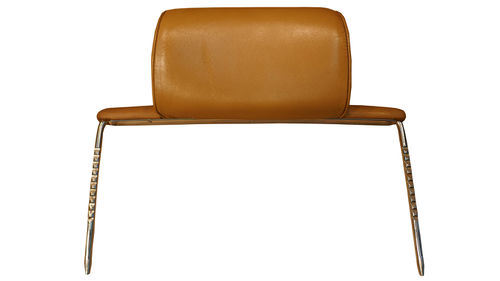
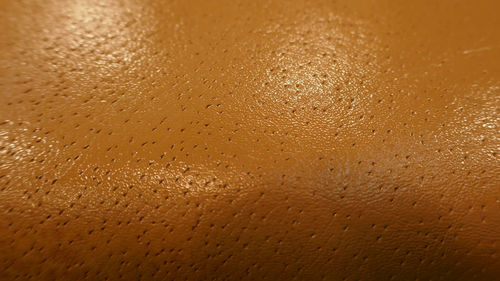
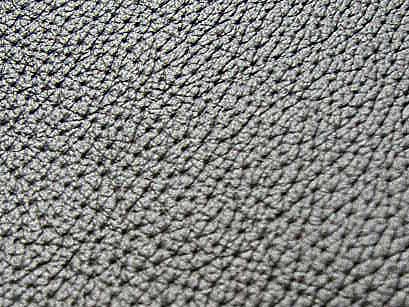

 a kotori web solution
a kotori web solution